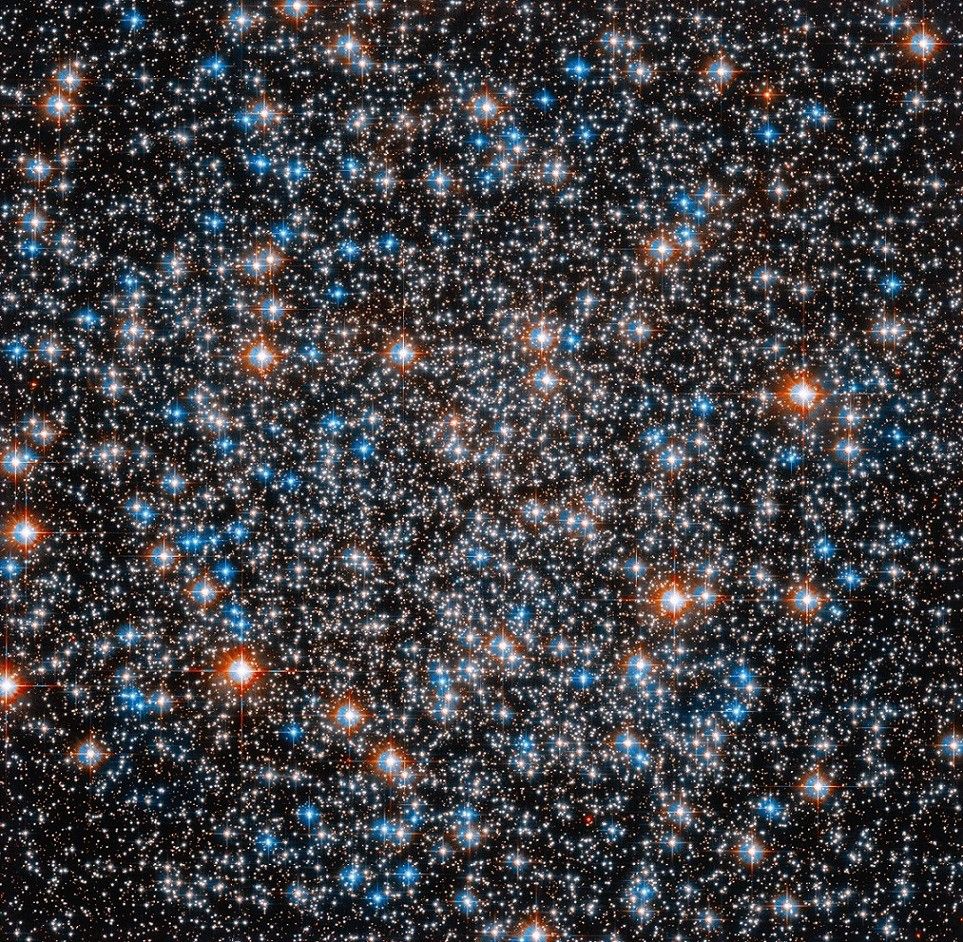🧵
This splendid image from Hubble’s Messier Catalog shows only a portion of Messier 55 (M55 or NGC 6809), a globular cluster containing 100,000 stars.
➡️
science.nasa.gov/mission/hubb...
Credit: NASA, ESA, A. Sarajedini (FAU), and M. Libralato (STScI, ESA,
#JWST); Image Processing: G. Kober
🔭 🧪
2/
M55, located in the southern Sagittarius some 20,000 ly away, has a diameter of around 100 ly & contains an estimated 100,000 stars with 55 variable ones, found in its central part.
The cluster, observed at wide field view, as a whole appears spherical like in the smaller image (lower left).
3/3
Why does it appear spherical?
Globular clusters are bound together and supported inside by strong gravity, which gives them the typical spherical shape and maintains a relatively high density of stars at their center.
NOTE: Of course, 100,000 stars in the cluster is a number estimated by scientists using indirect methods based on observations and theoretical models.🔭🧪
Hello, Nereide | thanks for the information and very informative
article.
Got any explicit information on the
particular theoretical models?
Again, thank you for a wonderful article ! 🔗📲
1/4
Theoretical models are based on well-established frameworks in stellar physics and astrophysics.
Among the main ones, without describing them, there are:
- Initial Mass Function (IMF). The widely used model is that of Salpeter (1955). Among the modern variants,⤵️
2/4
there are models such as that of Kroupa (2001) or Chabrier (2003).
- Stellar Evolution Models
Specific models: Codes such as MESA (Modules for Experiments in Stellar Astrophysics) or PARSEC (PAdova and TRieste Stellar Evolution Code).
- Dynamical Models: King's Model (1966)⤵️
3/4
Variants: More complex models, such as N-body or Monte Carlo (e.g. codes such as NBODY6 or MOCCA).
- Synthetic Stellar Population Models: e.g. Galaxev or FSPS - Flexible Stellar Population Synthesis)⤵️
May 7, 2025 13:224/4
Theoretical models are calibrated on well-studied clusters, where direct star counts in central regions (with telescopes such as Hubble) confirm the indirect estimates. These data help validate IMF and dynamical models for similar clusters.
(You're welcome!)

